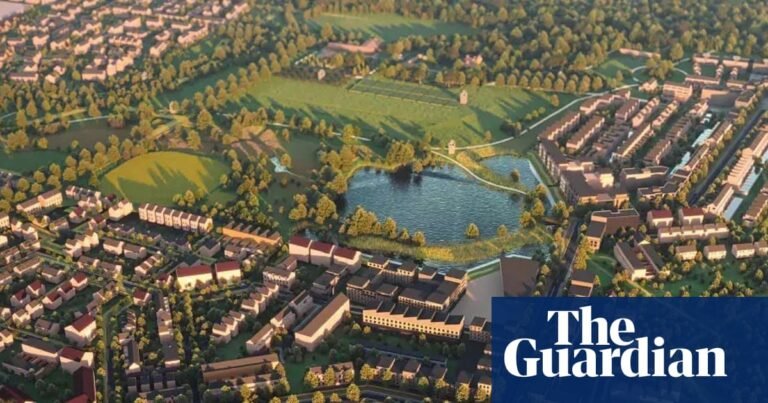One of Britain’s first all-electric towns to be built with almost no reliance on fossil fuels could soon help to power the grid with renewable energy.
The developers of a new garden town in Kent have struck a deal with a leading energy infrastructure company to design and operate a “smart” energy grid, which could mean its 8,500 households act as a virtual power plant for the rest of the country.
Those moving into the Otterpool Park development from 2027 will live in homes equipped with electric hobs, heating systems and electric vehicle chargers – as well as rooftop solar panels and batteries to power their fossil fuel free households.
In addition, developers hope to build a solar farm on the council-owned land adjacent to the town, which would generate enough electricity to meet half the town’s electricity needs.
In total, the town will have about 34 megawatts of renewable energy capacity, and one communal grid-scale battery for every 300 homes, meaning its residents will be able to make “significant savings on their energy bills from day one”, according to SNRG, the infrastructure company behind the plans.
The town’s on site electricity sources will also mean that its developers can avoid paying for significant grid reinforcements to connect the National Grid, which is a major source of delay for around a third of housing developments, according to property experts Knight Frank.
The town will still draw from Britain’s power grid to meet its electricity needs, but also supply electricity when demand is low. Photograph: Otterpool Park
The all-electric town will still draw from Britain’s power grid to meet its electricity needs – particularly during the gloomier winter months – but when parts of the National Grid need extra electricity, Otterpool Park will help keep the lights on.
Dan Nicholls, the chief product officer at SNRG, said the micro grid would coordinate all the electricity devices and generation sources to use as much local solar power as possible while minimising the cost of importing electricity from the National Grid.
skip past newsletter promotion
The planet’s most important stories. Get all the week’s environment news – the good, the bad and the essential
Privacy Notice: Newsletters may contain info about charities, online ads, and content funded by outside parties. For more information see our Privacy Policy. We use Google reCaptcha to protect our website and the Google Privacy Policy and Terms of Service apply.
after newsletter promotion
The cumulative impact of pausing the town’s car chargers for a matter of seconds could save enough electricity to help the National System Operator manage a shortfall of power in another part of the National Grid, according to Nicholls.
“No one single [electric vehicle] charger could create this impact – but reducing the charge for a few seconds on every charger could create an aggregated benefit. A small contribution from each charger creates a big saving for the grid,” he said.
SNRG is pursuing other similar projects across the country, but Otterpool is the most advanced, Nicholls added.
Jim Martin, the leader of Folkestone and Hythe district council, described the plans as “a perfect example of what can be delivered using renewable energy and reducing carbon emissions”.
“While the solar park is subject to a planning application, which will of course enable the public to give their views and allow further scrutiny by councillors, the prospect of generating green power on land already owned by the council and at no cost to local taxpayers is very attractive,” he said.
